Are you ready to invest in yourself, your health, and your wellbeing by learning five beginner yoga poses that will open the door to beginning a movement practice?
If so, you have quite a bit of company, at least based on the fact that I’ve had lots of folks ask me recently about what it takes to begin a yoga practice — especially in the context of seeking a more balanced existence.
It’s actually one of the things I love most about yoga. Yes, it’s a form of physical exercise, but it’s also so much more than that. It is a super powerful tool that can help you quiet your mind, ground yourself in what’s most important to you, and release all these positive chemicals in your brain.
And the best part is that while you may THINK you need to go out and buy stylish, pricey yoga attire or sign up for some yoga retreat, the truth is that yoga is one of the most approachable activities you can imagine.
To prove it, let me share five beginner yoga poses (called asanas) that will help get you on your way to beginning a Yoga practice — and you can do them in your underwear!
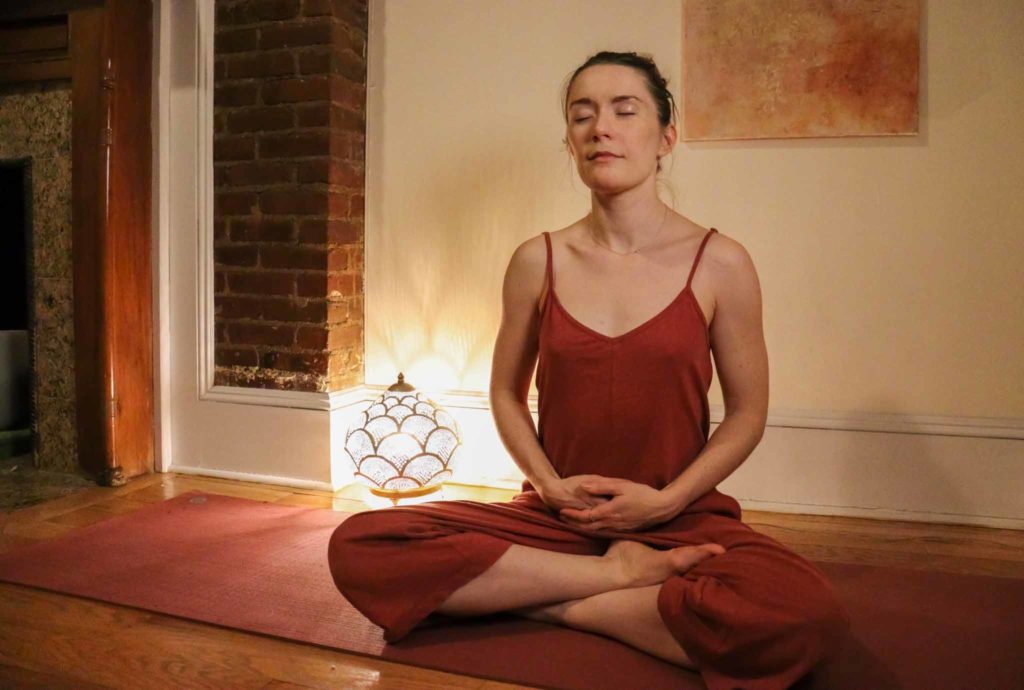
Pose #1: Easy Pose, aka Sukhasana
This first pose is a huge part of any practice. It involves just sitting in stillness and observing how your body and mind feel, without judging or needing to change or fix them.
How to Get Into It
Gently cross your legs with a tall spine, crown of the head over the heart, and tuck your chin ever so slightly towards your throat. If this feels uneasy (because let’s be honest, it’s the name of the pose, so it should be, right?), you may choose to place a folded blanket, pillow, or soft block under your knees. An alternative option would be to place that block or folded blanket under your bottom, so that you can allow your legs to gently fall away from the hips, giving you a nice release and allowing the spine to feel a bit more lengthened. The whole idea is to set yourself up to be free of sensory distractions (like that moaning hip). Stay in the asana for 10 breaths (or as long as you’d like), and observe your mind and breath.
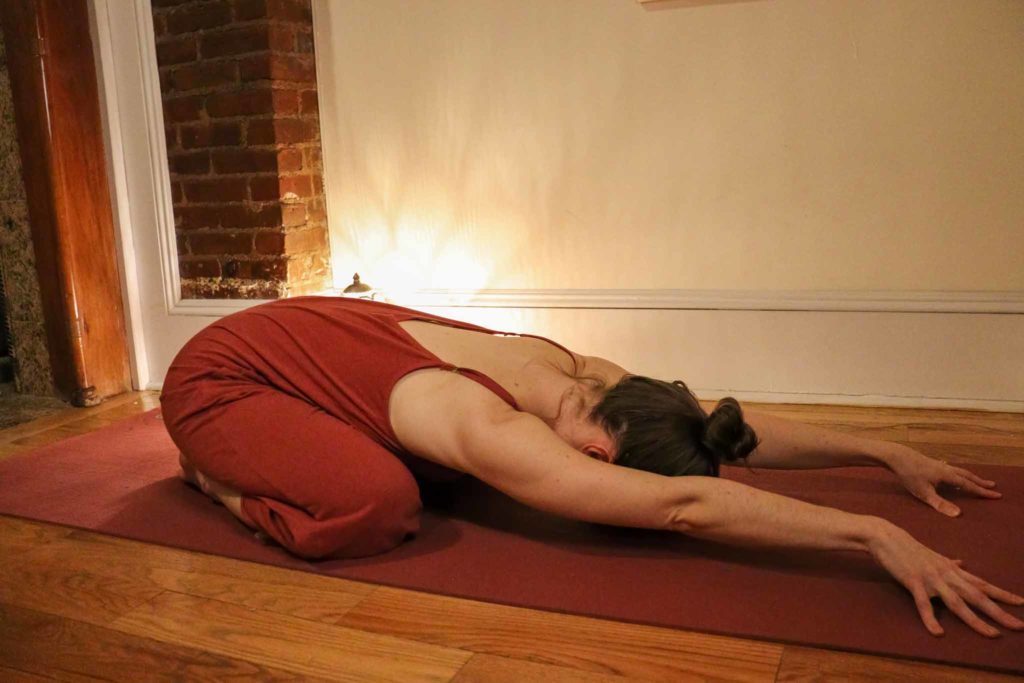
Pose #2: Child’s pose, aka Balasana
Bala means child, which embodies the essence of this simple, restorative shape. This is a great shape to give your lumbar spine a little TLC, or create a sense of calm if you’re feeling overstimulated or overwhelmed. It will also stretch the hips, thighs, and ankles.
How to Get Into It
Begin by kneeling on the floor, with the big toes together and your knees as wide or wider than your hips. Sit back on your heels, melt the belly down between your thighs, and extend your arms alongside the ears, resting your forehead on the ground. You can experiment with engaging your arms and lifting the elbows off the mat, or allowing the arms to be soft. You may also find it more comfortable to grab hold of the outside of the feet, allowing the lumbar spine to round a bit more. If you feel any of this is not comfortable enough, experiment with placing a stack of pillows or a bolster under your torso.
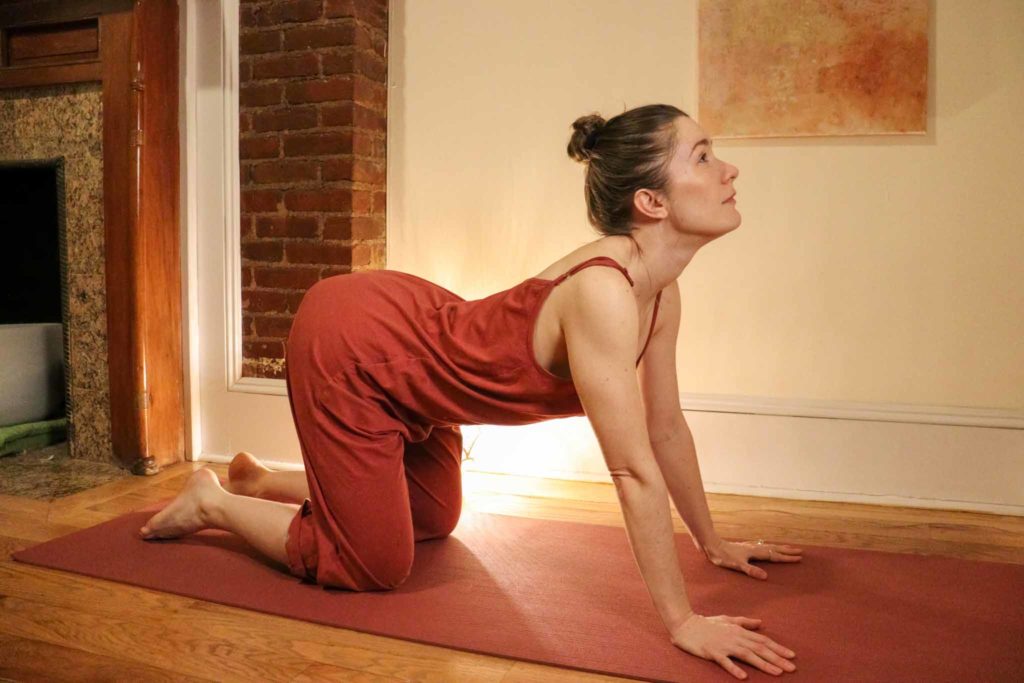
Pose # 3: Cat and Cow pose, aka Marjaryasana
The word marjary means cat, making this the cat stretch pose. It is great if you find yourself in a chair all day, as it will give your spine and neck a little break, while simultaneously activating them. It’s also a great way to begin a yoga or movement practice!
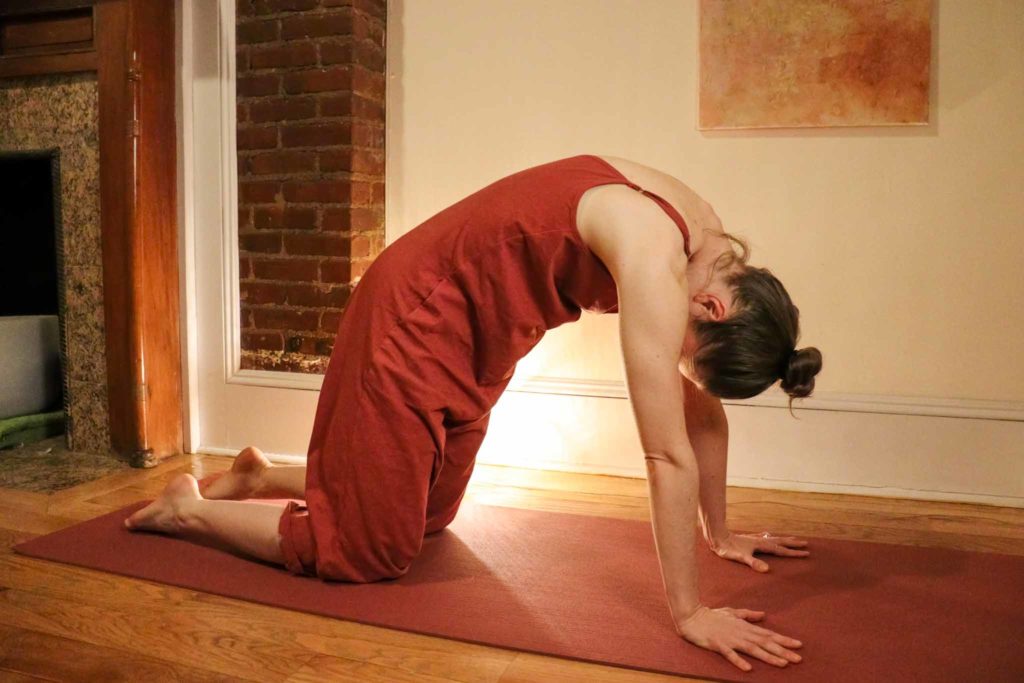
How to Get Into It
Come to a kneeling position, with your knees about two fist widths apart, tuck your toes under, and draw the hands out in line with your knees, directly under your shoulders. Make sure your hands are palm side down. Finding a neutral spine, gently close your eyes and draw your awareness to the spine and body. On your inhale, allow your belly to hammock, forming a tiny arch in your lumbar spine. You should peel your shoulders away from your ears, and lift your nose skyward. On the exhale, beginning with the tailbone, slowly round your spine, vertebrae by vertebrae, rounding your shoulders and nose towards your belly button. Continue at your own pace like this for a few rounds, finding any other movements that may feel pleasurable. If this feels at all uncomfortable on the wrists or knees, placing a blanket or pad under them may be helpful.
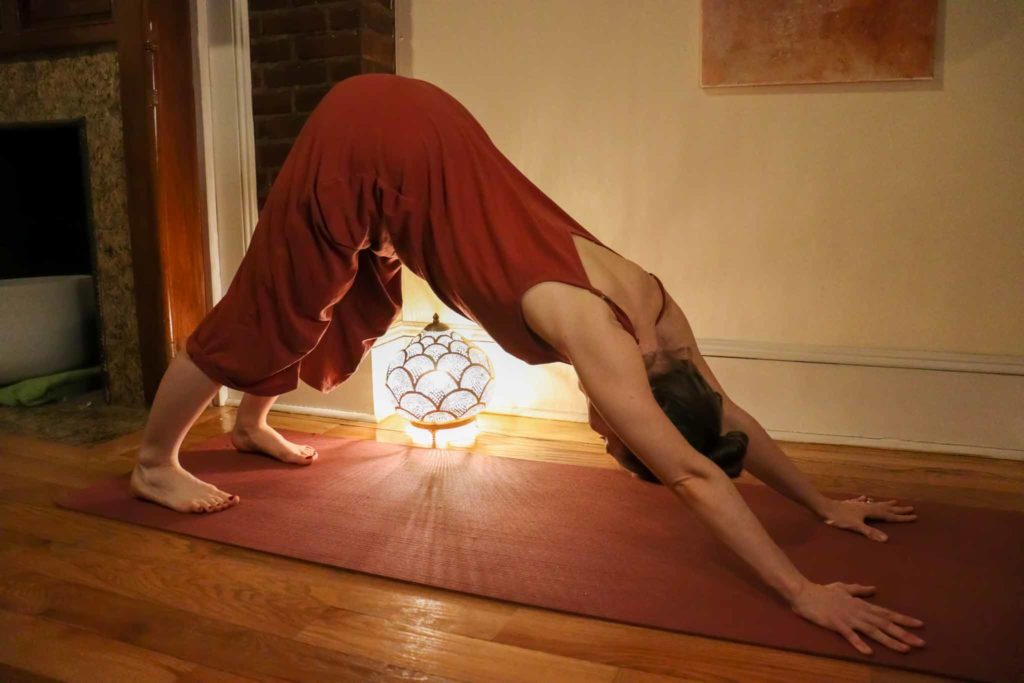
Pose #4: Downward Dog, aka Adho Mukha Svanasana
If you’ve ever watched a yoga scene in a movie, this is probably the one asana you know by name — so it’s no wonder it’s one of the five beginner yoga poses! This pose is great for stretching and lengthening the entire back side of the body, but it’s also great for building strength, and improving circulation to the head, face, and scalp, since it’s technically an inverted asana.
How to Get Into It
Start in a kneeling position with your knees two fists apart from one another. Like in Cat-Cow, walk the hands out in front of the knees and directly under the shoulders. Spread your fingers and imagine a hollow space in the center of the palm. From here, tuck your toes under and lift your hips skyward, engaging your thighs and drawing them up towards the hips. Don’t worry about making your heels touch the ground, but rather see how actively you can engage your thighs. Relax your head and neck, finding any gentle “yes” or “no” movements that feel good, drawing your shoulders away from the ears. As you breathe, see if you can find the same sensation in the belly and spine as you did in Cat-Cow! On the inhales, the belly swells and hammocks, on the exhale, the belly button plugs in towards the spine.
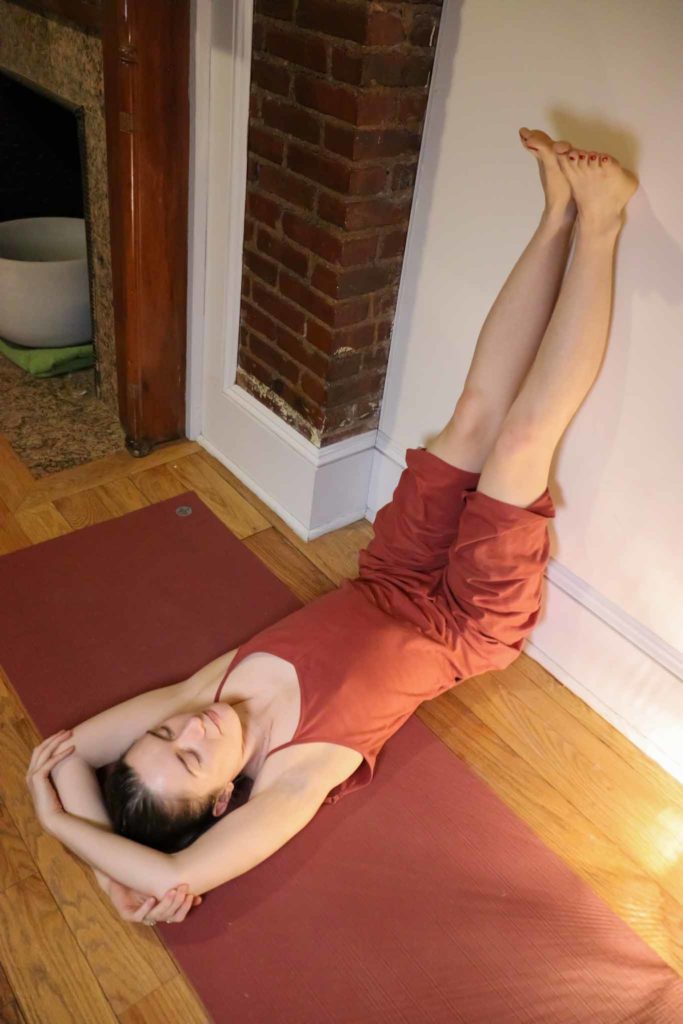
Pose #5: Legs up the wall, aka Viparita Karani
If there was a “best pose” prize in yoga, legs up the wall would win every time. This soothing, restorative pose is great for helping with swelling in the legs and feet, giving relief to the belly and digestive organs, and for just providing a sense of calm to the nervous system.
How to Get Into It
Begin by sitting with your hip snug against a wall., with your knees bent, gently lie back, drawing the legs up the wall. From here, you may need to scoot your hips a bit closer to the wall. You may also choose to place a towel or blanket under your head, if you’d like. If this feels like too much on the hamstrings or back, you may find it more comfortable to scoot your buttocks away from the wall, or to place a bolster or blanket under the sit bones. You can allow your legs to remain straight and parallel to one another, allow them to open like a V, or draw the soles of the feet in towards one another. Staying in this pose for seven to ten minutes is a great amount of time for this asana. When you’re ready to get out of this shape, you can draw your knees in towards the chest, and gently push the wall away, drawing the buttocks away from the wall. Rolling onto your side, you can take a moment to cradle your head in your forearm before sitting up carefully.
And those are the five beginner yoga poses (of course, you know they’re called asanas now!) that will make it easy for you to begin developing your yoga practice — and reaping its many rewards — no matter where you are or what you’re wearing!
